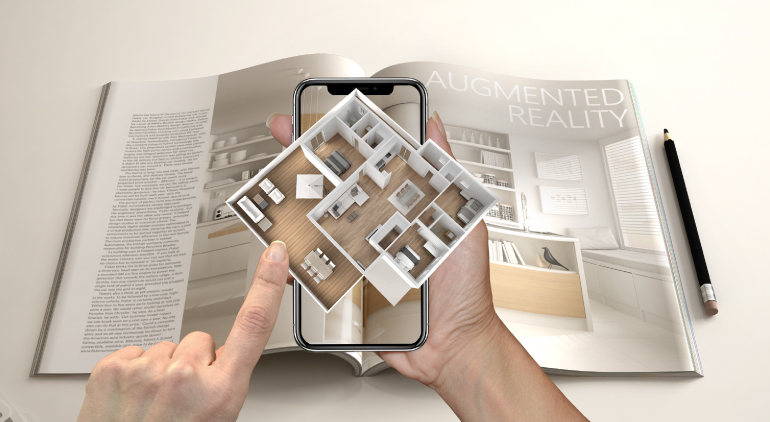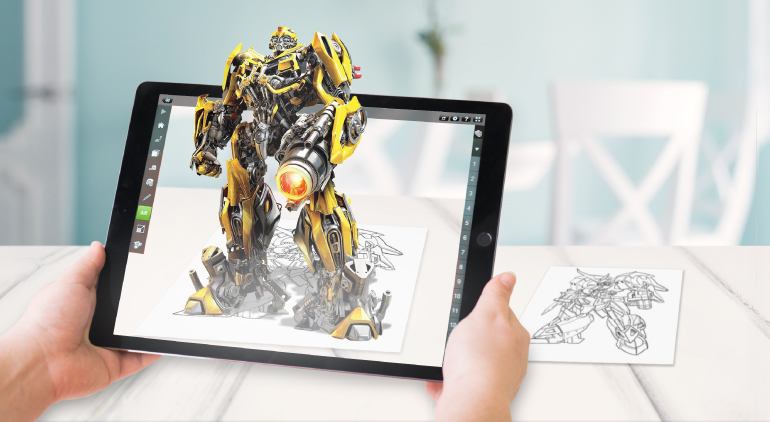Why Augmented Reality is Becoming Important in the Education Industry

Augmented Reality or AR uses computer technology and provides users with a unique immersive experience. Many industries today, especially those part of the tertiary sector, have experienced the benefits of AR.
The retail and entertainment industries are massively dependent on AR and other such immersive computer technologies already.
Gradually, the education industry has begun experimenting with AR, Mixed Reality (MR) and Virtual Reality (VR) and has shown a lot of promising advantages of augmented reality in education.
The immersive characteristic of AR makes its use in educational facilities a gripping experience. Immersive experiences are not simply fun and certainly not distractingly.
With AR in education, students are more curious about the content that is taught and as a result, are more motivated to learn.
Due to all these reasons and others mentioned intricately below, many are convinced that the benefits of Augmented Reality in education are significant enough, to make them a permanent part of the education system!
Benefits of Augmented Reality in Education

The use of augmented reality (AR) in education has several benefits. By making learning engaging and enjoyable, it increases engagement.
Applications for augmented reality (AR) overlay digital content on the physical world to provide an engaging, holistic learning environment. The pupils are drawn in and encouraged to participate actively by this engagement.
Through immersive learning, AR enhances memory. Students are more likely to retain and comprehend the material when they interact with 3D models, simulations, or historical reconstructions. This makes difficult topics more understandable by giving concrete form to abstract notions.
1. Interactive and Immersive
AR is captivating. Most people have used AR and have been obsessed with applications that are AR-based and are clueless that they have even come across the technology.
One of the first AR-based applications that gained a large buzz was Snapchat which uses innumerable visual and audio filters!
This application gained a lot of popularity and young people were especially mesmerized by this AR technology. The other application that is AR driven and became extremely popular is PokemonGo!
Many of you probably did not even realize that these applications were AR-driven until you just read it!
There are two commonalities in both of these applications. The first is that these AR based applications are interactive. You will remember how you could flip filters by nodding your head in Snapchat and run around wild in a mall to look for pokemons!
The application gets you excited because it is new and exciting! For students, this interactive platform would certainly make learning, a far more fun process. The second commonality between the two is how capturing the immersive technology in education.
You could spend hours on Snapchat or run around all day playing PokemonGo, obsessed with it, until you have found that one particular pokemon. This immersive technology can become a reason for students to be more invested in learning.
They would want to come to school to learn and be obsessed with figuring out how to draw a diagram perfectly!
2. Quality of Education
The quality of education improves significantly every decade. A primary reason for such improvements is advancement in technology. Learning and teaching are heavily influenced by technological advancements.
This is because, through education, people learn to keep up with the world as well. Hence, education has to constantly keep up with innovations and advancements.
Computer technologies like AR is certainly advanced than what we have today. With AR based applications, teachers can explain concepts to students in a lot more detailed manner than before.
Every kid today has a smartphone. Pointing a smartphone camera towards a book’s diagram can enable an AR application that allows students to view the diagram in more detail.
Having such interactive and immersive experiences depicts the importance of Augmented reality in education. It shows how much of an obvious fit this technology would be in the education system.
We can certainly understand from all the benefits mentioned so far, that the retention of content taught in classes supported by AR technology will be more than what we see in traditional classes.
Furthermore, there would be an obvious boost in efficiency as complicated concepts will be easier to teach with the benefits of VR in education.
3. Resourceful for STEM Education
STEM education involves studying any of the following disciplines: Science, Technology, Engineering and Mathematics. Each of these disciplines can be split further into parts. Each part of these discipline, contains heavy content filling books of at least 1000 pages with multiple volumes.
In simple words, any discipline that emanates from any discipline of STEM is not simple. The content is difficult to make sense and can seem endless.
However, people are understanding the need for AR in order to study such disciplines. DAQRI is a company that has released AR based applications namely, Elements 4D and Anatomy 4D which focus on chemistry and anatomy.
Another such company that produces education AR-based applications is called Arloon and is responsible for Arloon Plants (covers botany), Arloon Geometry (covers geometry), and Arloon Mental Math (covers basic maths).
These applications show how AR has already become an important part of the education system and how the future of AR in education will reap positive benefits!
AR is a beautiful technology that has helped the retail, marketing, and entertainment industries profoundly.
Its slow entrance into the educational industry must be welcomed with open arms, as this is the natural next technological advancement that should be accepted by the education system. The future of AR in education is efficient, good learning, and teaching!




